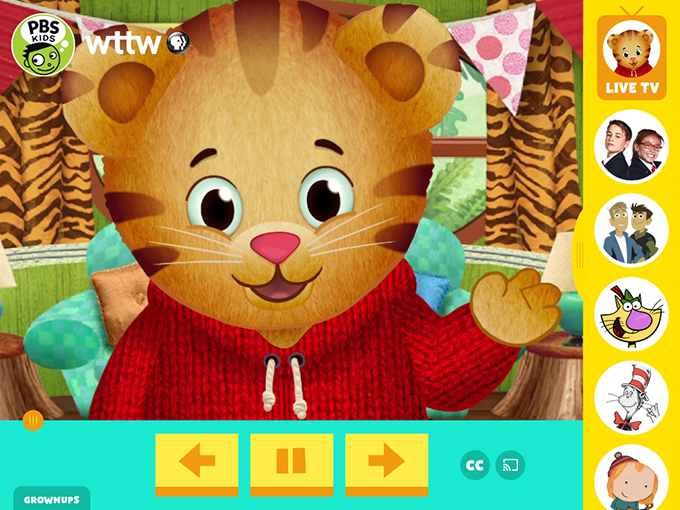In a move that expands the reach of its educational programming to 90% of US households—with an emphasis on providing access to low-income families—PBS KIDS has launched its first-ever 24/7 cross-platform content service.
Beginning today, 75 PBS affiliates will premiere the new over-the-air broadcast channel across the US for free. Viewers can also live stream the programming via pbskids.org and on the free PBS KIDS Video app for mobile phones and tablets. By the end of 2017, a total of 108 PBS stations are expected to launch the channel.
Taking into account a new US study by Maru/Matchbox that found 89% of parents of children ages two to six watch TV together as a family, PBS KIDS’ 24/7 service will debut a weekly primetime block every Friday from 7 p.m. to 9 p.m.—with repeats on Saturday and Sunday evenings—entitled PBS KIDS Family Night.
The first family-themed event kicks off on April 21, featuring the world premieres of PBS KIDS movies such as Daniel Tiger’s Neighborhood: Tiger Family Trip, Wild Kratts Alaska: Hero’s Journey, Ready Jet Go!: Return to Bortron 7 and Arthur and the Haunted Treehouse.
Additional movies programmed for the April 21 block include Odd Squad: The Movie, Splash and Bubbles: One Big Ocean and Sesame Street: The Cookie Thief.
As for regular programming on the service, 21 hit PBS KIDS series will be available at launch including Bob the Builder, Caillou, Dinosaur Train, Nature Cat, The Cat in the Hat Knows a lot About That!, WordGirl, Odd Squad, Sesame Street and Peg + Cat.
PBS KIDS will not acquire programming specifically for the new service. Local stations will continue to provide their current primary PBS channels featuring the PBS KIDS daypart along with the new 24/7 option, showcasing the same content, but never concurrently.
Also launching later this year to the live stream is the service’s new integrated games feature that will let kids toggle between watching shows and playing interactive games related to the TV content.
PBS KIDS first announced its move into 27/7 programming last February, asserting the need to address the changing media habits of American kids.
The network is particularly concerned with the country’s most underserved who are, according to studies from Common Sense Media and The Joan Ganz Cooney Center, more likely to rely on TV for educational content, and to be under-connected, with many families able to connect only via mobile devices and with inconsistent access to the internet.
























